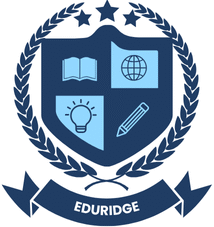Introduction
For a long time, student visas have been a divisive issue in American politics and education. Because of the significant changes to immigration policy implemented by the Trump administration, international students faced more challenges and worries than before. Institutions of higher learning and international students alike are watching with bated breath to see if the student visa requirements that were in place during Trump’s presidency, or any variants thereof, would be reinstated in 2025, after his electoral return in 2024.
This article delves into the significant policy changes that have taken place regarding student visas under Donald Trump’s presidency, how these changes have impacted international students, and what prospective applicants should expect in the year 2025.

1. Background: Trump’s Stand on Immigration and Education
From 2017 to 2021, Trump’s government prioritized economic autonomy and national security, leading to a more hardline stance on immigration. Particularly vulnerable to scrutiny were the F-1, J-1, and M-1 student visas. His administration increased scrutiny of visa applicants, proposed time limits for student stays, and tightened regulations.
The impact of Trump in 2025 has rekindled arguments about strict immigration rules, despite the fact that some of these proposals were mitigated or pushed down by the Biden administration.
2. Taking Stock of Trump’s Visa Policies Through 2025
During Trump’s second term, he is revisiting or reintroducing several programs that were either implemented or proposed during his first term. Here are the items:
-
Duration of Status: Historically, the United States has allowed international students to stay throughout the duration of their program. Students participating in longer or more research-intensive programs might face challenges due to Trump’s attempt to replace this with defined maximum stay periods.
-
Tougher Background Checks and Visa Requirements: Students from countries including India, Iran, and China faced more severe scrutiny and visa delays as a result of Trump’s administration. These processes often caused visa applications to be postponed.
-
Restrictions on OPT and H-1B Work Visas: These were implemented due to the displacement of American labor. Many potential students were scared off from coming to the United States to attend college due to the high unemployment rate and other job security concerns.
3. 2025’s Upcoming Events
While the details of Trump’s visa policy plan for 2025 are still being ironed out, papers from the DHS and early executive orders suggest a return to stricter rules. A few noteworthy developments include these:
-
Return of Fixed Stay Periods: Presently, a proposed rule limits student visas to a four-year term, independent of the duration of the program, unless students request extensions.
-
Country-Based Vetting: Increased scrutiny is being applied to students from countries on U.S. security watchlists once again as a result of national interest concerns.
-
Updated OPT Regulations: The government is examining OPT programs, but they are not being phased out. Some requirements may be more stringent than others, especially for occupations outside of STEM.
-
Fee Increases: The SEVIS and visa processing fees have been raised to cover administrative costs and to support measures aimed at enforcing visas.
4. Impact on Enrollment of Students from Other Countries
Due to Trump’s return to power, prospective international students are wary and uncertain. Preliminary enrollment statistics for the year 2025 show that:
-
There has been an 8-12% drop in applications from Chinese and Indian students.
-
Canada, the United Kingdom, and Australia are gaining popularity as alternative study abroad destinations.
-
American universities are fighting against immigration restrictions due to the positive cultural and economic impacts of international students.
5. How Educational Establishments Reacted
Institutions in the United States have long fought against visa restrictions. Many have already planned for 2025 with the intention of helping their towns’ communities of international students:
-
Legal Battles: Groups of colleges and universities have taken legal action against policies that they see as arbitrary or harmful to the academic community.
-
Services for Support: Schools have made it easier for affected kids to get help with issues including mental health, immigration, and legal matters.
-
Global Outreach Initiatives: American universities are increasing their recruitment efforts in countries that have been less affected by the visa restriction.
6. The Opinions and Background of Students
Current and prospective students alike report feelings of unease, confusion, and letdown:
-
Some are choosing other countries or delaying their applications.
-
Visas for certain applicants have been refused or interview dates postponed due to increased background checks.
-
National priorities in technological competitiveness have little impact on STEM students.
7. Effects on STEM and Non-STEM Students
As a general rule, the Trump visa policy differentiates between STEM (science, technology, engineering, and mathematics) and non-STEM students:
-
STEM Advantage: The United States government continues to prioritize STEM skills as crucial to national security and the economy, which allows for policy flexibility.
-
Non-STEM Drawback: Students majoring in the arts, social sciences, and humanities may have a harder time arguing for longer stays and better job opportunities after graduation.
8. Candidate Legal and Policy Advice
Currently, in order to improve your chances of getting a student visa:
-
Thorough Record-Keeping: Check that your financial and academic records are flawless.
-
Clarity of Purpose: Make your academic and professional aspirations, as well as your ties to your home nation, very clear.
-
Apply Early: Give yourself plenty of time to adjust for potential delays by applying early.
-
Stay Up-to-Date: Regularly check with reputable educational authorities and the United States Department of State for any updates.
9. Anticipating the Future: What Can We Expect?
The climate for U.S. student visas is directly affected by political leadership. Some of the policy changes brought about by Trump’s 2025 impact may be lessened due to legal challenges and opposition from universities. There may be a lot of paperwork and strict controls involved, so international students should be prepared.
Advice from experts:
-
Greater regional collaboration, like the intellectual partnership between India and the US, could mitigate some of the unfavorable effects.
-
A middle ground between free and open education and protecting the nation’s security may be reached via gradual policy changes.
Conclusion
As U.S. immigration and education policy undergoes adjustments in response to Trump’s 2025 political comeback, international students will face an uncertain visa landscape. The process of obtaining a student visa to study in the United States has become more complex as a result of new requirements on work authorization, term limits, and increased inspections. With the correct preparation and institutional support, nevertheless, many kids may still be able to succeed academically in the US.
Prospective students should be well-informed, take the initiative, and maintain communication with official resources and institutional advisors. In spite of all the problems, the United States still offers unrivaled educational opportunities to anyone who can figure out how to get through the system.
